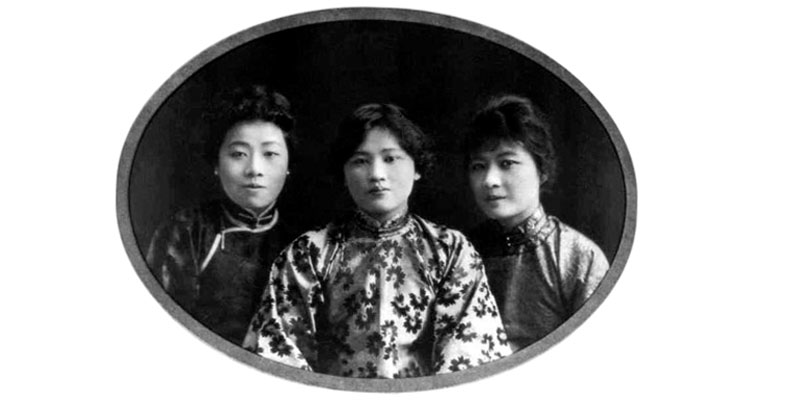It can be said that the Soong family, an influential Chinese family with ties to some of the country's political fortunes in the 20th century, changed the course of history. The patriarch, Charles Jones (Charlie) Soong, was born in China in 1861, and traveled to the U.S. as a young man, where he spent eight years studying to become a Christian missionary through the financial patronage of industrialist Julian Carr.
After graduating from Vanderbilt University with a degree in theology in 1885, Charles returned to Shanghai where he established a publishing company for religious texts. It was through this venture that in 1894 he met Sun Yat-sen, who led a Methodist church service in Shanghai. Both men were Western-educated Christians who sought political change in China; Carr provided money to underwrite their political efforts.
Although their initial efforts at reform failed and resulted in exile for Sun Yat-sen, he eventually became the first president of the Republic of China in 1911 and is honored today within the People’s Republic of China and the Republic of China (present-day Taiwan). In 1906, Charlie Soong was appointed treasurer of the Revolutionary Alliance and was responsible for financing the Nationalist Party revolution, which governed all or part of mainland China from 1928 to 1949.
Charlie Soong married Ni Kwei-Tseng (1869-1931) and they had six children: Soong Ai-ling (b.1889-1973), Soong Ching-ling (1893-1981), T.V. Soong (1894-1971), Soong Mei-ling (1898-2003), and lastly two brothers T.L. Soong (1899-1983) and T. A. Soong (1907-1969). The three sisters and their eldest brother became foundational figures in the establishment of the Republic of China (1912-1949), the Republic of China in Taiwan, and the People’s Republic of China. Charlie Soong sent his three daughters to be educated in the United States. They attended Wesleyan College, a private Methodist college in Georgia founded in 1836 that was the first higher-education institution in the world to offer degrees for women.
By 1918, the three sisters had graduated from Wesleyan College and returned to China. Soong Ai-ling, who was a described as clever with business and finance worked for Sun Yat-sen until 1914 when she married H.H. Kung. At the time, H.H. Kung was the wealthiest man in China and subsequently became the governor of the Bank of China, minister of finance and later premier of the Republic of China (1912-1949). In 1949 Ai-ling and H.H. left China and lived the remainder of their lives in New York.
In 1908, the third sister, Soong Mei-ling, joined her older sisters as a 15-year-old freshman at Wesleyan, but later transferred to Wellesley College in Massachusetts, nearer her brother T.V. Soong, who was at Harvard. in In 1920 she married Chiang Kai-shek, a political and military leader in the Republic of China and led the war effort against Japan, and later against Mao Zedong's Communist forces. Chiang was elected president of the Republic of China five times, serving as president for a total of 46 years. Mei-ling served as the government of Taiwan's public emissary to the American public. She participated in the war effort in many ways, including her role as deputy commander of the Republic of China Air Force. She established schools for orphans in China who had lost their parents during the war, and addressed the U.S. Congress twice. She was a supporter of the International Red Cross and other charitable organizations and eventually moved to New York where she lived to the age of 105, dying in 2003.
The Soong family was intimately involved with the establishment of three national governments: the Republic of China (1912-1949), which rose from the failed imperial Qing dynasty; the People’s Republic of China, which was established in 1950; and the Republic of China in Taiwan. In this capacity they were involved in missionary work, humanitarian efforts to allay the effects of war, establishing the foundations of government in China resulting from the fall of the last imperial dynasty, providing financial assistance that was pivotal to the survival of the Chinese state, and the preservation of imperial works from what likely would have been either destruction or looting in the chaos of war.
Few families in the history of China accomplished as much in total as the Soong family, and the consequences of their choices still resonate with us more than 150 years after Charles Jones Soong left his village in China for the United States.
See images of the Soong family below!














